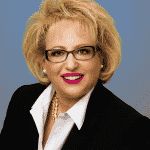Even though housing came to a standstill in April, the market for RCFEs roared back and trends have developed that foreshadow continued strength.
RCFE Housing Trends
With a low supply and strong demand, the market has not been this hot since 2013.
It was sudden. It was unnerving. Nobody had seen anything like it in their lifetime. A pandemic unfolded before everyone’s eyes. Major sports leagues suspended their seasons. Disneyland closed its gates. Schools went online. The state of California announced a “stay at home” order. Life as everybody knew it came to a grinding halt.
That was just four months ago. Since no one had experienced a pandemic and the shutting down of the economy, people turned to hoarding toilet paper and cleaning products, and stocking their cupboards and refrigerators. Yet, slowly but surely, everyone began to adapt to a “new normal,” living with a virus. Businesses turned to Zoom to keep industries moving along. Dining out shifted to DoorDash, Grubhub and Uber Eats. New car dealers turned to online listings and “virtual” test drives. The real estate industry adapted as well with masks, gloves, physical distancing, and a myriad of contracts that outlined the proper protocols needed to sell RCFE homes.
While unemployment is still high and the overall economy is slowly crawling its way out of a forced stoppage, housing has been a bright spot with a “V-Shaped” recovery. The same is especially true for senior housing, with strong pent up demand for RCFEs and continued low supply. The economy came roaring back and trends have emerged that pave the way to a strong finish to 2020 in Orange County:
The active listing inventory of RCFEs has dropped to unprecedentedly low levels. Even at the start of the year, there were not that many RCFE homes on the market. Anything that did come on the market, was priced at fair market value and had no significant deferred maintenance issues quickly opened escrow. Even prior to the shutdown, the inventory had increased by only 7%. In March, it was at low levels last experienced in 2013. During the lockdown, COVID-19 suppressed the number of RCFE owners coming on the market.
COVID-19’s grip on preventing RCFE owners from listing their homes is disappearing. Yet, the lack of new RCFEs coming on the market over the last several months has substantially contributed to the current ultra-low active listing inventory.
RCFE demand is at its hottest level since 2012. Prior to the virus lockdown at the start of March, with 3.75% interest rates, RCFE demand had reached levels not seen since 2015. Amid the lockdown, COVID-19 suppressed RCFE buyer activity and demand dropped in mid-April to a low last hit in 2008 during the Great Recession. However, the real estate industry adapted and became an essential service. RCFE demand had doubled from its April lows by the end of May and had tripled by the start of July. Of all real estate sectors, senior housing has outperformed all other sectors, and demand for senior housing has increased exponentially for the past 15 years running. Interest rates have continued to drop and have reached 3%, a record low. The low mortgage rate environment has been the rocket fuel that has propelled RCFE demand to its highest level since 2012. And rates are expected to remain at these low levels for the remainder of the year.
In Orange County, RCFE demand typically peaks between April and May, during the Spring Market, yet that was during the “stay at home” order. Essentially, the Spring Market was postponed, and RCFE housing is currently in the middle of the strongest demand of the year and is poised to peak between now and the start of September. For the rest of the year, expect demand to remain strong, fueled by historically low rates
The Expected Market Time is at its hottest level since June 2013. The story is not only a “V-Shaped” recovery, it’s that the market has not been this hot in seven years. The Expected Market Time is currently at its lowest point of the year, and has not been this low in July since 2005. Anything below 60-days is considered a Hot Seller’s Market, where RCFE homes are appreciating, and multiple offers are the norm. The Expected Market Time is a statistic that is derived from both supply (the active listing inventory) and demand (recent pending sales). With an ultra-low supply combined with piping hot demand, the Expected Market Time has dropped to unprecedented levels for the middle of summer. As the market transitions into the Autumn Market next month, and both the active inventory of RCFEs and demand slowly drop, the Expected Market Time will gradually rise. It will remain an RCFE Seller’s Market for the balance of 2020.
Do not expect a flood of new RCFE inventory due to the first period of Forbearance coming to an end in September. Many will extend the benefit to March 2021. It is also important to note that 90% of all homes in Forbearance have more than 10% equity, and 77% have more than 20% equity. That means that if any of these RCFE owners are forced to sell due to a financial hardship, they can tap into their equity.
The Rest of 2020 Summary: expect the active listing inventory to remain at low levels, RCFE demand to remain strong, mortgage rates to remain low, and the Expected Market Time to remain at its lowest level in years.
If we can be of assistance with your purchase, sale or lease of an RCFE or other property please call us today for your FREE Consultation:
Michelle (949) 397- 4506 & Melvyn (949) 500-3630



